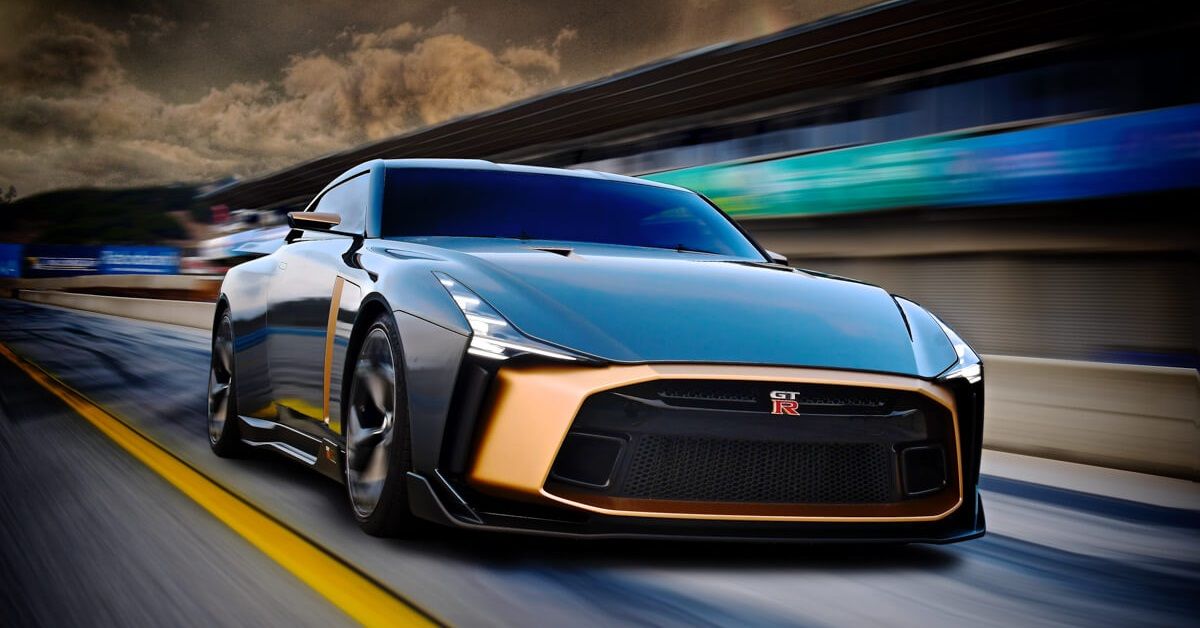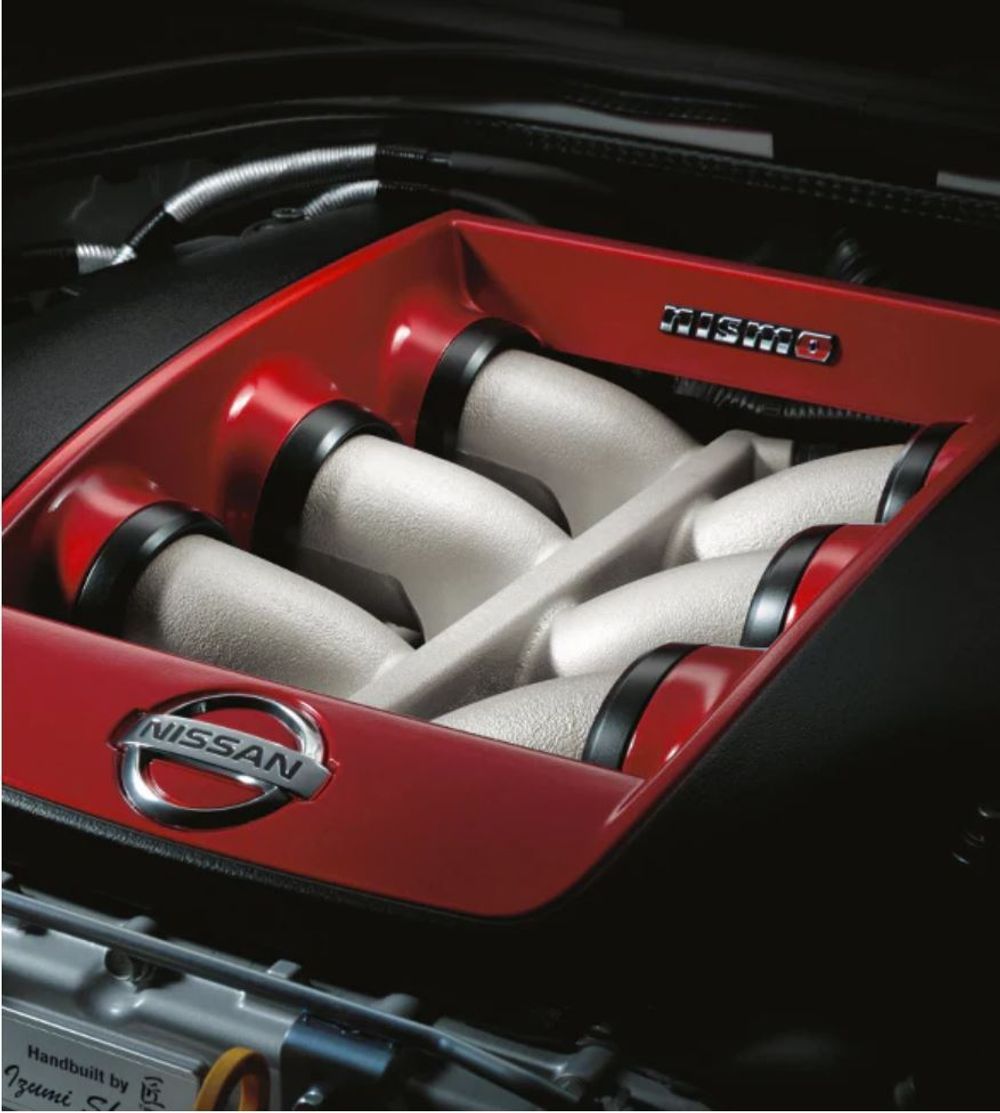When Nissan initially revealed the concept design for the GT-R50 back in 2018, it was met with plenty of excitement from the public, and that eagerness continued through the course of the car's production. The design, originally called the GT-R Nismo, was a collaboration between Nissan and Italidesign and lived up to the hype with a sleek body and powerful engine. Only fifty units were made available, making it an extremely rare and collectible sports car.
Although not many are able to afford the hefty price tag of the GT-R50, those who do are in for a treat with the many amazing features and stunning design accents of this supercar. For the rest of us, it's still fascinating to learn about and fawn over.
The best feature of the Nissan GT-R50 will obviously depend on your personal preference, but we believe it comes down to two aspects in particular.
Before we look at our favorite features of this recent supercar, let's briefly look back at the history of the GT-R.
The Nissan GT-R Had A Turbulent History
The Nissan GT-R debuted in 1968 at the Tokyo Motor Show and became available to the public in February 1969. The original iteration of the model included a dual-overhead-cam 2.0-liter, six-cylinder inline engine. The S20 engine boasted an impressive 160 hp and 130 lb-ft of torque.
The car came out of the gate in sleek style and with intense speed and kept that reputation through the years. The first generation of the GT-R topped out at 124 mph and ran a quarter-mile in just 16.1 seconds. It also won the JAF Grand Prix, proving itself against others in its class.
In 1973, Nissan began producing the GT-R as a coupe only. They still used the V6 and increased speed by keeping the power from the engine the same but cutting down on some of the car's weight. Although the first generation was produced in the thousands, the 2nd-gen GT-R faced issues due to the oil crisis, and only 197 were manufactured.
After a sixteen-year gap, Nissan used the GT-R32 to showcase their technological and performance advancements. The engine was swapped for a turbocharged 2.6-liter inline six-cylinder that could grant 260 lb-ft of torque and a whopping 276 hp. The quarter-mile time was reduced to 13.9 seconds, and a revival in demand allowed for a total production run on the model of 43,394 cars.
The sensational comeback of the GT-R saw the Japanese carmaker refocus on its performance and racing design. In the following models, Nissan was able to increase horsepower and torque while improving the overall aerodynamics and design of the car. With those objectives pursued, the Nissan GT-R33 earned a new nickname in Australia after dominating other cars with larger V8 engines; Godzilla.
This beastly success continued, and various upgrades were made to ensure that the car became increasingly lighter using carbon fiber parts as well as faster by replacing the standard 5-speed manual with a Getrag 6-speed manual. The predecessor to the GT-R50, the R35, was first made available in 2007 and featured the tried and true V6, but also twin-turbocharged in order to reach 480 hp and 430 lb-ft of torque. The starting price of the model in the United States upon release was $78,000.
The Nissan GT-R50 Has A Fantastic Design With A Powerful Engine
The GT-R50 took the entire history of the GT-R lineage and improved upon it. As a celebratory model for the 50th year anniversary of the GT-R model line as well as for the Italdesign shop, Nissan went all out in a collaborative effort to create the most monstrous iteration of “Godzilla” yet. Availability of the car is limited, with only fifty being produced, and each starts at a massive $1.1 million.
Although heavily imbued with features to make the car worthy not only of the GT-R name but also the extreme price tag, two of the coolest features have to be its sleek body design and pumped-up engine.
Originally dubbed the “Nismo,” the GT-R50 was not only designed in partnership with Italdesign but is also shipped to Turin, Italy, to their design house to undergo some artisanal touches. The upgrades from the stock body include bespoke parts, hand-formed body panels, and many accents.
Customers are able to further make their already rare car into an even more singular and unique ride by choosing their finish colors as well as the accents. The production model of the GT-R50 includes larger side mirrors and a sculpted rear valance. Its sloped roof, lower body, chiseled quarter panels, rear wing, and V-shaped rear window add to the overall appeal of the body of the car, giving it a phenomenal, graceful look reminiscent of other well-known and loved sports cars.
Beneath the hood of the newest Godzilla is a fitting engine: a twin-turbo 3.8-liter V6. The new engine is capable of producing up to 710 hp and 585 lb-ft of torque. To accommodate the higher power, the GT-R50 also comes with beefed-up driveshafts and differentials. The six-speed manual dual-clutch transmission has been reinforced too, and new Bilstein adaptive dampers were added.
With an insanely streamlined and modernized body, powerful upgrades to the engine, limited production numbers, as well as the inclusion of hand-created parts allowing for a one-of-a-kind car, it makes sense that the GT-R50 commands the attention of collectors and racers alike. Customers began receiving their cars late in 2020 and have continued to through 2021.
Whether you think the coolest feature is the sleek body or the powerful engine, or even something else entirely, you'd have to agree that the GT-R50 has lived up to the “Godzilla” moniker. Those interested in purchasing one of the exclusive rides can still do so (until the 50 limit has been reached), although, as of August 2021, there is no confirmation from Nissan or Italdesign as to how many are still available.



